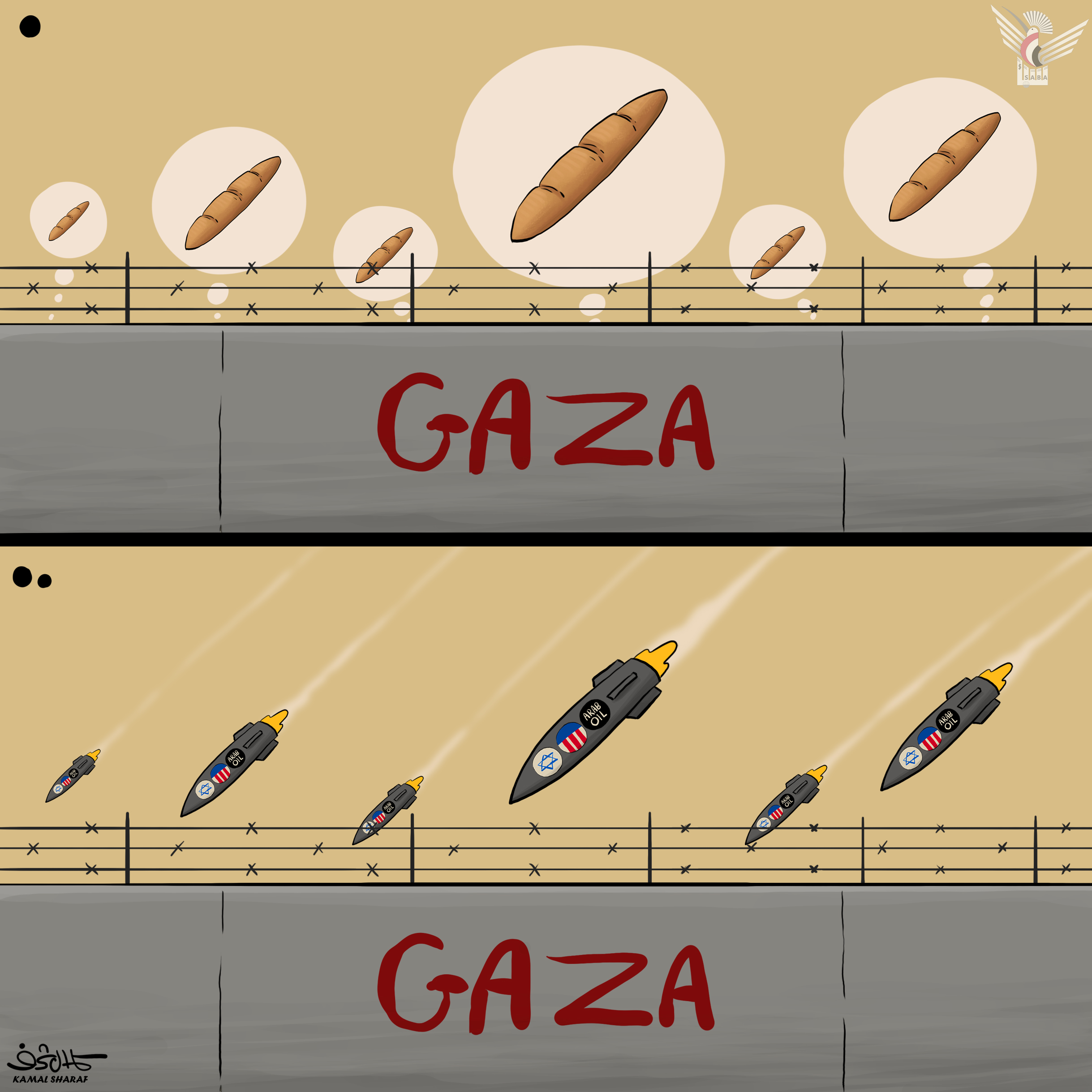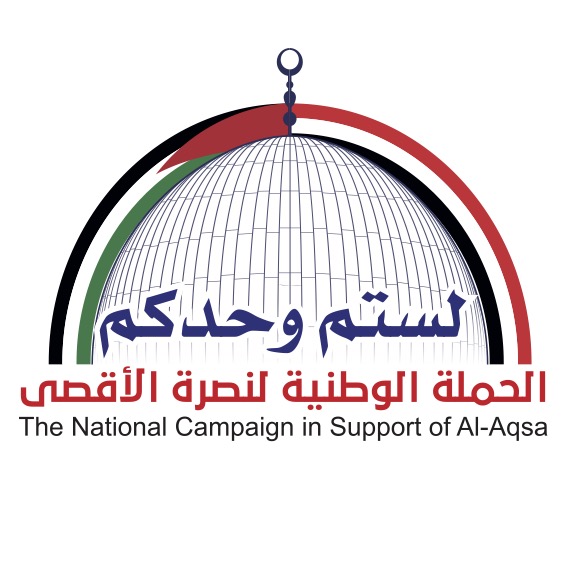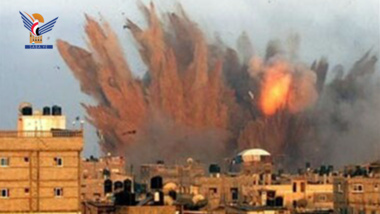SANA'A October 17.2023 (Saba)- Numbers are rising daily and the suffering is present and poignant, revealing the horror of the humanitarian catastrophe and the scale of the crime that the American-Saudi-Emirati aggression coalition has committed and is still committing against the Yemeni people.
Eight years, the aggression and siege have persisted in multiple forms and methods, although they differ in their details, but they are united in their outcomes and results, represented by the continuous targeting of Yemeni people and infrastructure.
Horrific crimes and massacres committed by the US-Saudi-Emirati aggression coalition against the Yemeni people since March 26, 2015, until September of this year. The number of victims is still rising, which constitutes full-fledged crimes in accordance with the principles of international humanitarian law and international laws and conventions.
The Ministry of Human Rights recently launched the eighth report on the crimes and violations of the aggression coalition against Yemen, which included staggering numbers and statistics about the massacres it committed against the Yemeni people, which are the ugliest in human history.
The release of the report coincided with the “Al-Aqsa Flood” operation carried out by the Palestinian resistance against the Zionist enemy, which killed and caused confusion, and made it commit the most heinous crimes and violations against the Palestinian people in the Gaza Strip and the occupied territories, without regard to civilians and international laws related to human rights.
The oppression of the Yemeni-Palestinian peoples was united in crimes and violations and those behind them, but they differed in names, titles, justifications, terminology and pretexts, with the time difference that has passed since more than seven decades have passed since the Palestinian issue, which will remain the central and first issue of the nation and pivotal to Yemeni people.
Content of the report:
The Ministry of Human Rights report included the most prominent crimes of the aggression coalition in Yemen, during the past nine years, including violating national sovereignty, missile bombing, occupying parts of Yemeni territory, imposing a siege on millions of civilians, and supporting and encouraging terrorist groups.
The report presented the crimes and violations committed by the aggression coalition in systematically killing civilians and targeting population centers, public and private civilian property in an approved manner, and civilian objects and facilities, and the coalition declared cities such as Saada Governorate as military targets.
The report included crimes committed by the coalition using prohibited weapons, including cluster bombs, missiles, and others, and launching indiscriminate attacks on food and medicine stores and warehouses.
Victims of aggression:
The report devoted space to statistics resulting from the aggression, which caused the death and injury of 49,022 civilians, including 8,757 children, 5,407 women, and 34,858 men.
The number of victims of the aggression and siege in Yemen indirectly since March 26, 2015 has reached approximately 700 thousand people.
Food targeting:
The attacks of aggression caused the destruction of ten thousand and 66 food stores, the destruction and burning of the food supplies inside them, the damage to one thousand and forty-two food locomotives and tankers, the destruction of more than 691 central food assembly markets, and the destruction and burning of more than 11 thousand and 733 commercial stores.
More than 395 food and pharmaceutical factories were destroyed and damaged, and 11 grain silos and mills were destroyed.
Repercussions of aggression:
According to a report by the Ministry of Human Rights, half of the two million and 300,000 boys and girls under the age of five in Yemen face acute malnutrition during the current year, and malnutrition rates have increased during the past years of aggression.
The report pointed out the repercussions and effects of the aggression on children and women, causing one million and 200 thousand women to suffer from malnutrition, half of whom are pregnant, and causing millions of families to lose their sources of livelihood.
Thousands of workers also lost their jobs, more than half of Yemen's population faces a severe food shortage, and the situation of thousands of Yemenis has reached the fifth interim classification, "the famine stage."
Targeting agricultural and livestock wealth:
The eighth report of the Ministry of Human Rights devoted an overview of the destruction caused by the aggression to agricultural and animal wealth, indicating that the aggression destroyed and burned 13,995 sites and fields and three thousand agricultural equipment and targeted 500 homes and agricultural reserves producing crops.
Five government production farms were destroyed, and 40 agricultural extension centers and complexes were bombed, seven regional plant and veterinary quarries, 90 central and rural markets, centers, and agricultural cold stores, 53 agricultural associations, and eight thousand and 124 agricultural fields and farms.
The aggression caused the death of 442,630 heads of “cows, sheep, goats, and camels,” and 90 purebred Yemeni horses, and the destruction of 4,224 poultry farms, egg hatcheries, and feed factories.
360 livestock and cow barns, 58 honey apiaries, 42,650 beehives, 24 cold stores, 1,125 crop production farms, 40 rural agricultural markets, and 114 tillers and harvesters were destroyed.
The report presented the effects resulting from targeting agricultural and livestock wealth, as thousands of vast areas of agricultural land were affected and became unsuitable for agriculture and production.
Livestock production collapsed, and most residents of rural areas stopped raising livestock and cows due to their displacement and the repeated attacks on livestock production pens.
The report stated that the aggression caused a severe shortage of feed and agricultural production requirements such as seeds, fertilizers, pesticides, etc., a decline in local grain production by 60 percent, the inability to market agricultural and animal products internally and externally, and a rise in losses in agricultural production to unprecedented levels.
According to the report, the effects and repercussions of the aggression on agricultural and livestock wealth included a decline in the volume of agricultural and livestock production, which contributes 35 percent of Yemen’s total national income, and a decline in Yemen’s production of authentic honey, which during the years before the aggression amounted to more than 25 thousand tons per year.
The production of beekeepers’ farms also declined, causing them huge losses, in addition to the decline in Yemeni coffee productivity to its lowest levels.
Destruction of drinking and irrigation water:
The report dealt with what the aggression coalition destroyed during the past years, including water facilities, the number of which reached 1,985 facilities, including “dam, barrier, water tank, irrigation canals.”
1,338 well water pumps, submersibles, modern irrigation networks, 13 solar energy units and well drillers were destroyed.
The report focused on the effects resulting from the aggression’s targeting of water facilities, including the difficulty of millions of civilians obtaining clean drinking water.
Bacterial contamination in the drinking water of most wells has increased, the water infrastructure has been destroyed in some governorates, many water tanks, wells, pumps and networks have been affected, and the average per capita share of drinking water has decreased.
Targeting fish wealth:
Fish wealth facilities were targeted by the aggression aircraft, which caused the killing and wounding of more than three thousand and 76 fishermen. It directly targeted 186 children and women from the fishermen’s families were killed and wounded, according to the report.
The report stated that the aggression destroyed and burned four thousand and 625 fishing boats, targeted 100 fish landing centers and fish collection markets on the coast of the Red Sea, prevented fishermen from practicing fishing on the Yemeni coast and targeted them directly, in addition to occupying some islands where fishermen practice the fishing profession.
He pointed out the arbitrary measures of the aggression and its deprivation of 40,000 fishermen from practicing the fishing profession on the Red and Arabian coasts of Bahrain.
The aggression countries arrested and detained more than a thousand fishermen placed them in their prisons in Ethiopia and Djibouti, and practiced forms of torture against them, and Eritrean forces attacked Yemeni fishermen in Yemeni territorial waters.
Also, the arbitrary measures practiced by the aggression countries were represented by foreign ships throwing chemical pollutants into the international shipping lane in the Red Sea, under the sight and supervision of the aggression coalition’s battleships.
Emirati companies destroyed the marine environment on the Yemeni islands of the Socotra, Hanish and Zuqar archipelago by bulldozing and uprooting coral reefs and transporting them to the UAE state.
The aggression’s bombing of fisheries facilities led to the cessation of the fishing activity of more than four thousand and 500 boats, and the pollution of sea water with oils and petroleum derivatives and air pollution as a result of the aggression’s targeting of boats and ports.
It also led to the elimination of marine organisms and their eggs, affected the health of marine life consumers, and harmed the source of national income and food security for the Yemeni people and their supply of hard currency.
The repercussions of the aggression affected the fishermen and their families in the loss of their sources of income (boats), the death of large numbers of fish, and a loss to the fishermen who were forced to unload the fish and throw it into the sea amounting to more than 60 million Yemeni riyals.
Destruction of health, educational and industrial facilities:
Regarding the health sector, the report explained that the aggression destroyed 572 hospitals and health facilities, targeted 92 ambulances and their crews, and prevented the entry of medical supplies for chronic diseases.
More than 60 percent of the health sector stopped, affecting more than 48,000 employees in the sector, and diseases, epidemics, and infections spread due to the lack of services.
He stated that the aggression coalition's targeting of the educational sector led to the destruction and damage of about 28,000 educational and pedagogical facilities, more than 45 government and private universities and colleges, and 74 technical and technical institutes.
Regarding industrial facilities, the report indicated that the aggression targeted 400 public and private factories, which were completely and partially damaged, and some of them were taken out of service.
The aggression coalition also destroyed approximately five thousand and 600 facilities and electricity networks, killing and wounding more than 380 workers in the electricity sector.
The aggression coalition also caused the total and partial destruction of 2,176 sites, facilities and communications networks, targeting 511 petrol and gas stations, and burning 264 fuel tankers.
Infrastructure targeting:
The aggression aircraft targeted the infrastructure of ports and airports, whether by bombing, destroying, or closing.
It also targeted media, judicial, youth and sports facilities, road and bridge networks, other civilian facilities, civil and cultural objects, and archaeological sites and monuments.
The aggression’s destruction of infrastructure led to waves of internal displacement of millions of Yemenis who live in difficult humanitarian conditions in camps or demolished homes.
In addition to targeting sectors of the Yemeni economy, which led to major repercussions with the deterioration of the value of the local currency, the purchasing power of citizens, high unemployment rates, and the exacerbation of the problem of poverty and hunger,
as well as targeting the oil and gas sectors, which are considered a source of government revenues, and oil and gas production and export facilities.
Internationally prohibited weapons:
The report of the Ministry of Human Rights presented the governorates and districts targeted by the aggression coalition with cluster munitions during the past eight years.
Saada Governorate topped the list of governorates, in which 15 districts were subjected to a total of 1,108 raids, followed by Hajjah Governorate, with a total of 422 raids, and then Sana’a Governorate, with 366 raids using cluster bombs.
The aggression also targeted with cluster bombs Hodeidah Governorate with 232 raids, Ma’rib with 223 raids, Taiz with 222 raids, Al-Jawf with 76 raids, Dhamar with 33 raids, and Amanat Al-Asimah with 15 raids.
The rest of the aggression’s raids were distributed in the governorates of Amran, Al-Bayda, Ibb, Aden, Abyan, Lahj, Raymah, Al-Mahwit, Al-Dhalea, and Shabwa.
The Minister of Human Rights in the caretaker government, Ali Al-Dailami, commented on the crimes committed by the American-Saudi-Emirati aggression coalition, saying, “No country has the right to intervene directly or indirectly, let alone military intervention, invasion, and direct occupation in violation of the provisions of Security Council resolutions.”
He considered the crimes and violations of the aggression to be contrary to international humanitarian conventions and laws, holding America and the aggression coalition responsible for the humanitarian catastrophe through the continuation of the aggression, war and siege.
He added, "Our problem with the United Nations relates to its abject failure in managing civil files and its surrender to international threats."
Despite this tragedy and human suffering that Yemen has been subjected to over eight years, the Yemeni people and sectors of the state were able to withstand and overcome the challenges of aggression and siege.
M.M

| more of (Local) |




